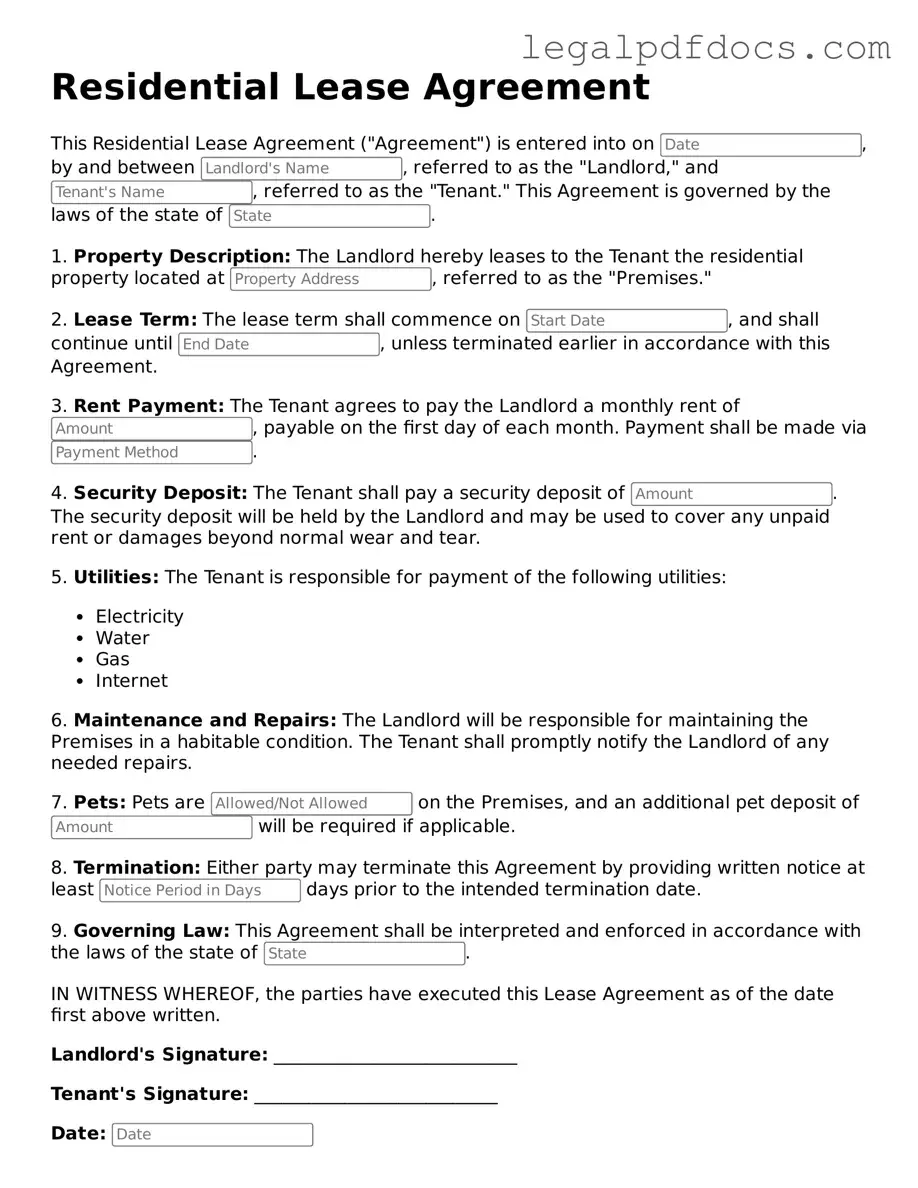Lease Agreement Template
A Lease Agreement form is a legal document that outlines the terms and conditions between a landlord and a tenant for renting a property. This form serves to protect the rights of both parties and establishes the expectations for the rental arrangement. For a smooth leasing process, consider filling out the form by clicking the button below.
Open Lease Agreement Editor Here
